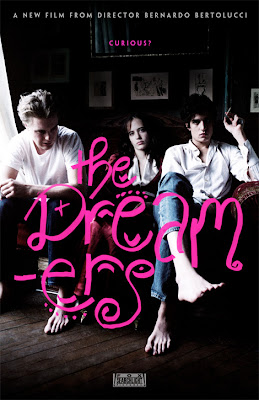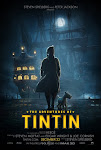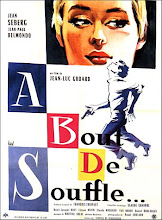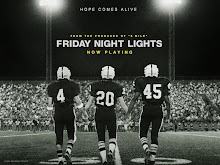
I have seen one Bertolucci film prior to this. Stealing Beauty. A film I do not remember much of because its been a while since I've seen it. I do not well know what kind of a film-maker Bernardo Bertolucci is. Going through his filmography one notices strokes of genius, often unrecognized it seems, often unaccepted, leading us to the conclusion that he probably isn't for all and sundry. Then again, who is?
After watching The Dreamers, one notices a particularly heavy amount of things which direct to the reasons why Bertolucci's vision as a director might not suit everyone. However, The Dreamers is such a film that one cant quite think about not liking. There is something exceptionally enchanting about the way Bertolucci tackles his characters, his plot, his sights and sounds, his montage. Something impeccable about his piece. The Dreamers, set in the backdrop of the Paris student riots of the late 60's, is, through most of its length, oblivious to whatever is going on. The characters are such. Obliviousness is a very integral point in the film. As is fantasy.

The Dreamers is a film that is obsessed with films. The classics. The Godard's and the Nicholas Ray's. The Truffaut's and the Hawks'. The Chaplin's and the Keaton's. In fact, it is so obsessed with certain films of the past that a portion of the film are these films. The characters are the characters who were. The dialogues are the dialogues that were. It is in no way paying homage to these films. Its characters are individuals who live in a life of the films gone by, still remembered for their genius. A genius so brilliant that maybe for a certain amount of time, they make you oblivious of what you are or are not surrounded by. Obliviousness is The Dreamers, hence Bertolucci changes the name The Holy Innocents from Adair's novel to The Dreamers.
The lead of the film is an American boy. An exchange student in Paris, there to learn their language, a fan of the film art, spending a predominating amount of time at the Cinemateque Francaise. He says "the first time I saw a movie at the Cinemateque Francais I thought 'Only the French.. only the French would house a cinema inside a palace". The Dreamers spends its first few minutes establishing the French Nouvelle Vague of the late 1950's and 1960's influenced by the Classical Hollywood cinema and the Italian Neo Realism. Once done, we are immersed into the lives of the twins (played by Eva Green and Louis Garrel), and Matthew the American (played by Michael Pitt).

To introduce one to the element of fantasy, one is never given any sort of hint of the world of the twins outside the walls of their house. Twins, of the opposite sex, conjoined at the shoulder. An impossibility. Yet we see marks on the shoulder's of either of them. How that might be possible or what that might be hinting at is unknown. They share a love that is, at first sight, incestuous. At least that is the image we first get through the eyes of Matthew, who is the voyeur.
Matthew likes sneaking around, being secretive. He is at first a bit unsure of his new friends. He notices their every move. The incomprehensibility of the closeness the twins share with one another, the touch of the father on the daughter's waist, often lead us to believe different things. Maybe even things that aren't there at all. It's either all too real and unbelievable to think about, or its not there at all. A mere power that voyeurism has. To mislead the viewer into thinking something that might not even be present. They seem a bit odd. Matthew urinates in the basin, with the tap on. Recall Godard's A bout de Souffle, where Jean-Paul Belmondo's Michel inquires as to whether he can urinate in Patricia's (Jean Seberg's) basin.

There are numerous marks of classic film characters in Isabelle, Theo and Matthew. To make a note of all of them would require an entire report. They play the guessing game, acting out sequences from their favorite films and asking the others to guess. Failure often leads to drastic, unthinkable penalties. In a way Matthew acts as the twins' window into the world outside. The world around them. Changing the Keaton' and the Chaplin's to the Hendrix' and the Claptons'. Introducing them to certain realities which they have so far been ignorant about. "We do not watch television. We are purists" says Isabelle. Matthew echoes what their father had once told them. That one cannot change the world before realizing that one is a part of it. One cannot stand outside looking in.
Bertolucci, through his genius, makes you smell a gas leak through what he shows us. He makes you feel the pain of sex in all its expression. He makes you forget anything else that you might be thinking and drowns you in his vision. A vision which cannot be delved into too deeply for one must understand that there are certain things which are better left ununderstood. You might just spoil it by trying to analyze it too much. From a director who decides to keep an accidental scene of a woman's hair catching fire as an indication of wilder things to come, The Dreamers is cinema in its own way. The same way that Godard said about Nicholas Ray being cinema, which Theo tells Matthew on their first meeting.
It takes the maker less than a second to take you out of this enchanted world, having its own emotional orgy, oblivious of all its surroundings, and throw you into the turmoil of the riots. In a flash, the love that existed is forgotten, taken over by a sudden burst of emotion, of purpose. It is about a near-perfect threesome of two scrumptous French's and one American who, in a way, flips there world upside down for a period of time. I cannot comprehend things about this piece, and in a way I do not want to. It's better taken the way it is.
Dont think too much, you might just end up discovering beauty.



































